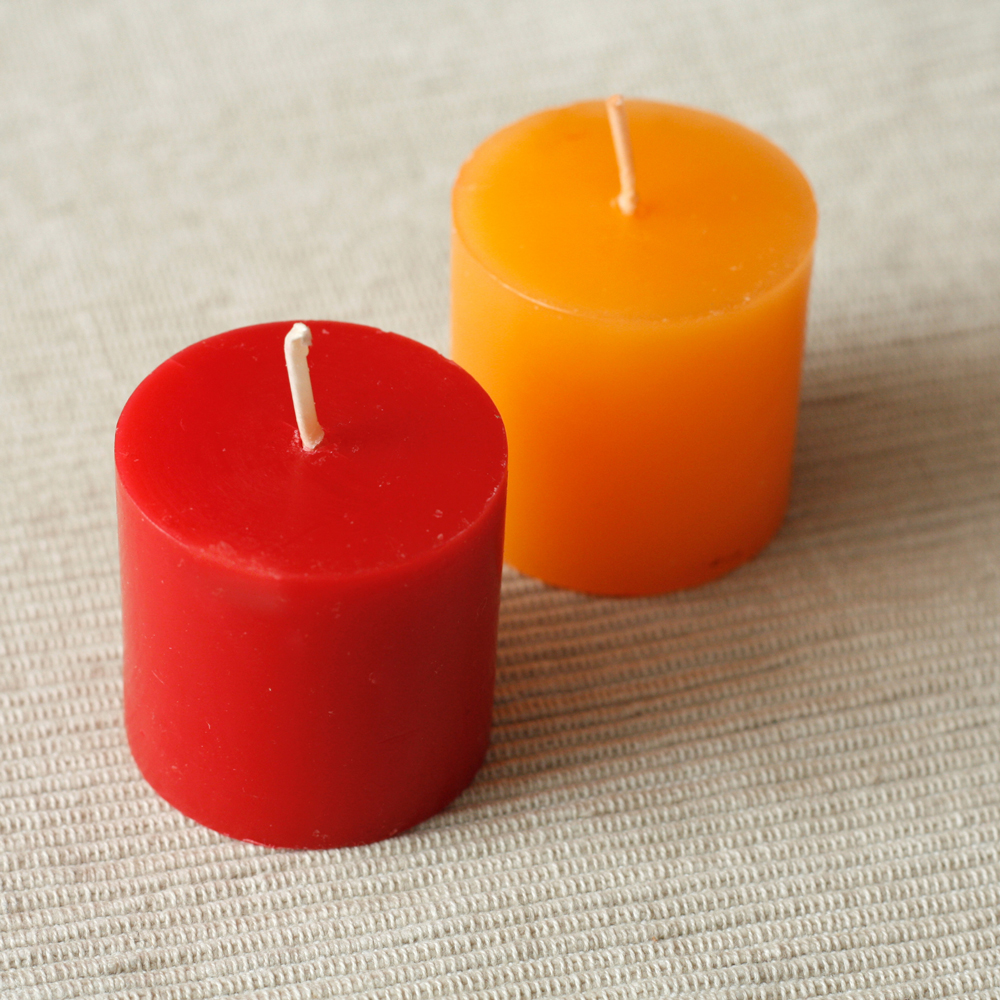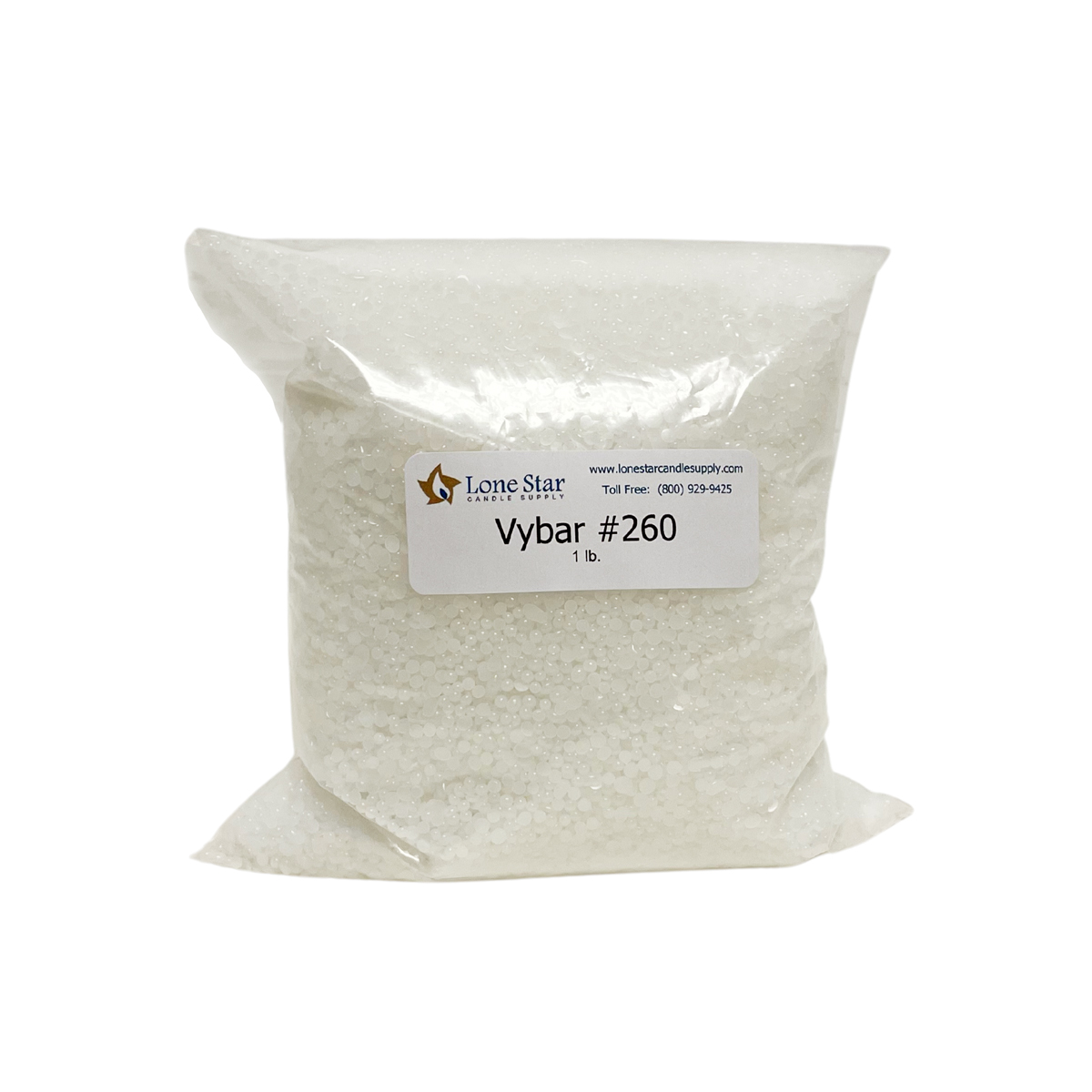Guide to Candle Waxes & Additives for Candle Making
Deciding which wax to use is normally the first decision that needs to be made when selecting your supplies for candlemaking. Many people are surprised to learn that we carry over 25 different waxes. Each wax is different and is designed for a certain purpose. In this section, you will learn about the many variables that go into deciding which wax is best for your application.
Wax Type
One major distinction between waxes is where they were derived (what they are made of). Traditionally, candle waxes have mostly been paraffin based. Soy based waxes have grown in popularity in recent years due to their improvements in quality, as compared to earlier soy waxes. Many customers also prefer using a natural product which is produced by American farmers. Click here to browse our selection of candle waxes. We are an Authorized Distributor for IGI (The International Group, Inc.), Cargill, and Golden Waxes.

Container Candles
This is, by far, the most popular style of candle and also is the easiest type of candle for a beginner to make. Because container candles are poured directly into the container from which they will be burned, there is no need for the wax to be hard and able to support itself while burning. There is also no requirement for mold release. Shrinkage is generally NOT desired in a container wax because it can cause the wax to partially pull away from the glass, leaving a less desirable appearance. Because of the need for little-to-no shrinkage, wax companies developed softer waxes commonly referred to as "single-pour" or "one-pour" waxes. This is very convenient and causes much shorter production times as compared to waxes which require more than one pour. The paraffin waxes we carry which are best suited for container candles are IGI 4630 (single pour), IGI 4627 (single pour), IGI 2281, IGI 4636 (single pour), and IGI 4633 (single pour). For a soy container wax, use Naturewax C-3, Golden Brands 402, 415, 444, or 464. We also offer two different blended waxes for container candles which are the IGI 6006 (which is a blend of paraffin and soy) and Golden Brands 454 (a blend of soy and coconut wax). Currently, our most popular container waxes are IGI 4630 and IGI 4636.

Votive Candles
Because they are placed into a holder for burning, votive candles do not need to be as hard as pillar candles. However, votive wax needs to be able to release from votive molds, so some shrinkage is still required. Some votive waxes require more than one pour and others require only a single pour. The paraffin waxes we carry which are best suited for votive candles are IGI 4794, IGI 4761 (single pour). Currently, our most popular votive wax is IGI 4794.

Pillar Candles
Because they do not go in a container and need to be able to stand on their own while burning, pillar candles need to be hard and therefore require a hard wax. Another requirement for a pillar wax is that it will release from the mold when the wax cools. By nature, wax shrinks as it cools and this shrinkage allows for the release from molds. This shrinkage will cause the need for a 2nd (and sometimes 3rd) pour when making the candle. More detailed information is available about this later on our instructions page. The paraffin waxes we carry which are best suited for pillar candles are IGI 4625, and IGI 1239. Currently, our most popular pillar wax is IGI 4625.

Additives
Wax Tarts
Tarts are similar to votive candles in that they do not have to be as hard as a pillar candle but they still require some shrinkage so they can be removed from a mold. You will need a wax that is firm but has a low enough melting point so that it can melt in a warmer. If you choose a wax that is too soft, you risk not being able to remove the tart from the mold. We currently carry two waxes that we recommend for tarts: IGI 4794 and IGI 4826. We prefer the IGI 4794 to the IGI 4826 because it has a lower melting point and is easily melted in most ceramic or glass warmers.
General Guidelines for Heating and Pouring Wax To learn more about all of our wax types, read the Soy Wax Guidelines &
Paraffin Wax Guidelines
Most of our waxes are pre-blended waxes which essentially means that a base paraffin was enhanced by other ingredients by the manufacturer so that no additives should be necessary. Although many candlemakers will experiment with different formulas to achieve the results they are seeking, as a general rule we do not recommend using additives with any pre-blended waxes. Any wax described as a base paraffin is just that... a base product, generally at a lower price, with no performance enhancing additives blended in at the time of manufacture. Additives such as vybar will likely need to added in order to achieve the best results. Click wax additives to browse products.

Vybar
Vybar is the modern alternative to stearin (stearic acid). Vybar is a polymer which is used primarily to aid in fragrance oil retention, although it also benefits the candle by increasing opacity and enhancing dye colors. When using vybar, wax can hold more fragrance oil without the fragrance oil separating from the mixture. This enables the candlemaker to put twice or even three times as much fragrance oil into their mixture, causing the candles to have much better hot throw, which is a term used to descirbe the fragrance characteristics of a candle while it is burning. There are two types of vybar. Vybar 103 is used for harder, higher melt point waxes such as pillar and votive waxes. Vybar 260 is used for softer, lower melt point waxes such as container waxes. Recommended usage is 1/4 tsp - 1/2 tsp per pound of wax but will vary per application. Don't overdo it, though, because too much vybar can actually trap the fragrance in your candle, reducing your candle's hot throw.

UV Stabilizer
Also known as UV Inhibitor, UV Protectant, and UV Absorbant. This additive is used to help protect candles from fading due to the exposure to UV light rays. Fragrance oils can also cause colors to fade/change. UV Stabilizer helps to prolong the fading process, but will not completely eliminate it. This additive is particularly useful if your candles will be displayed on store shelves for an extended period of time. This additive is not already present in a pre-blended wax and we highly recommend its use for all wax types and candle types. Recommended usage is 1/4 tsp - 1/2 tsp per pound of wax but will vary per application.